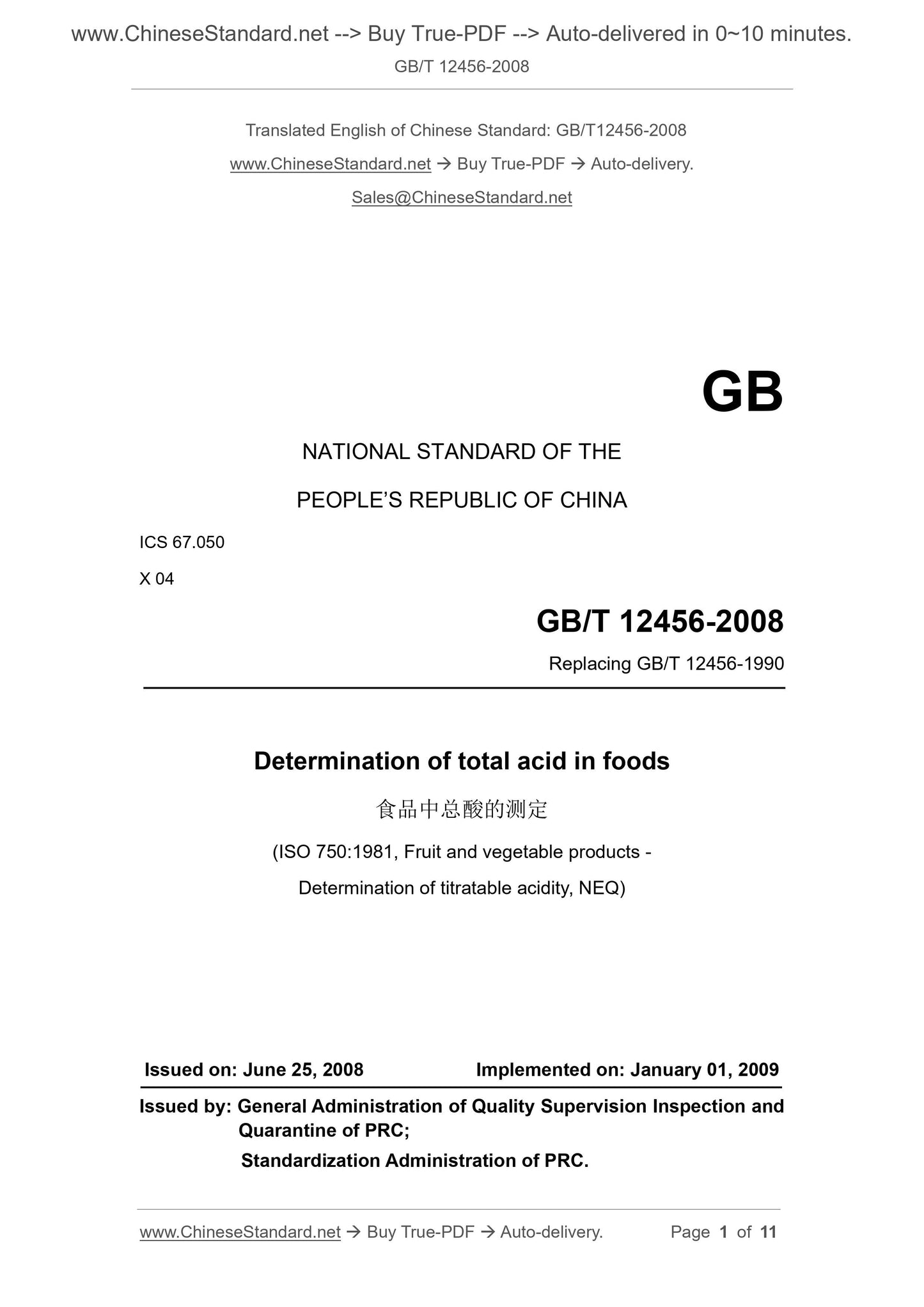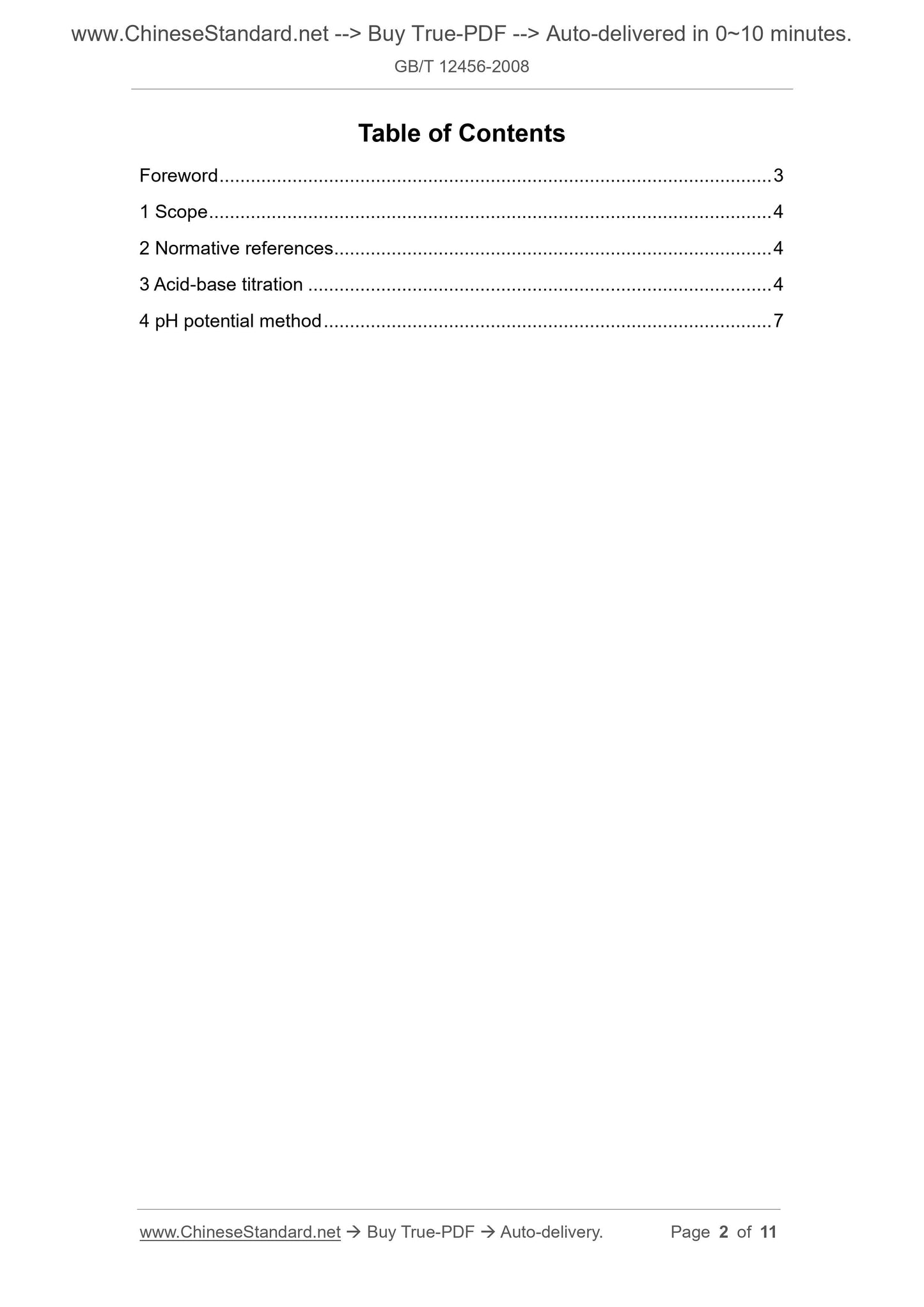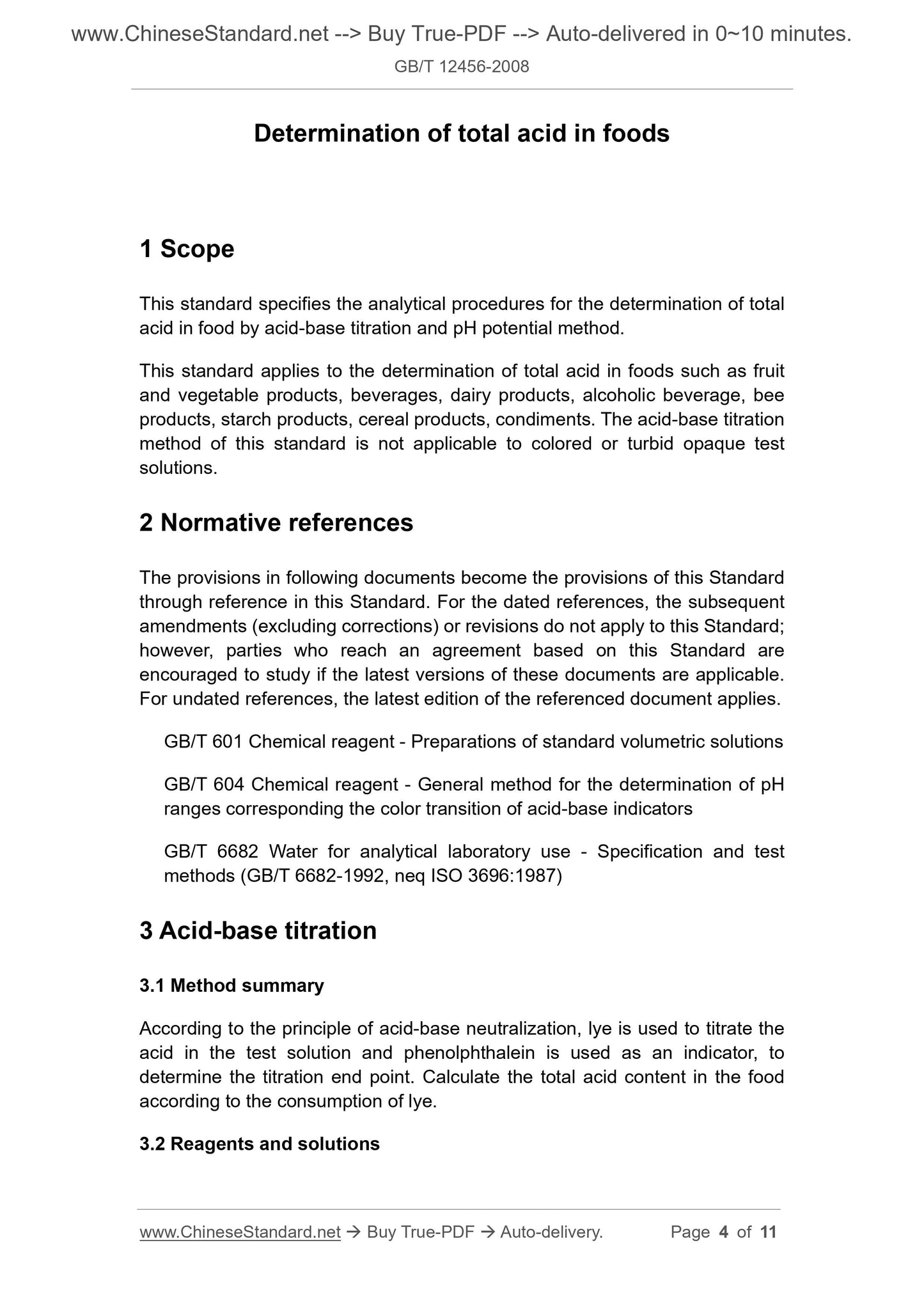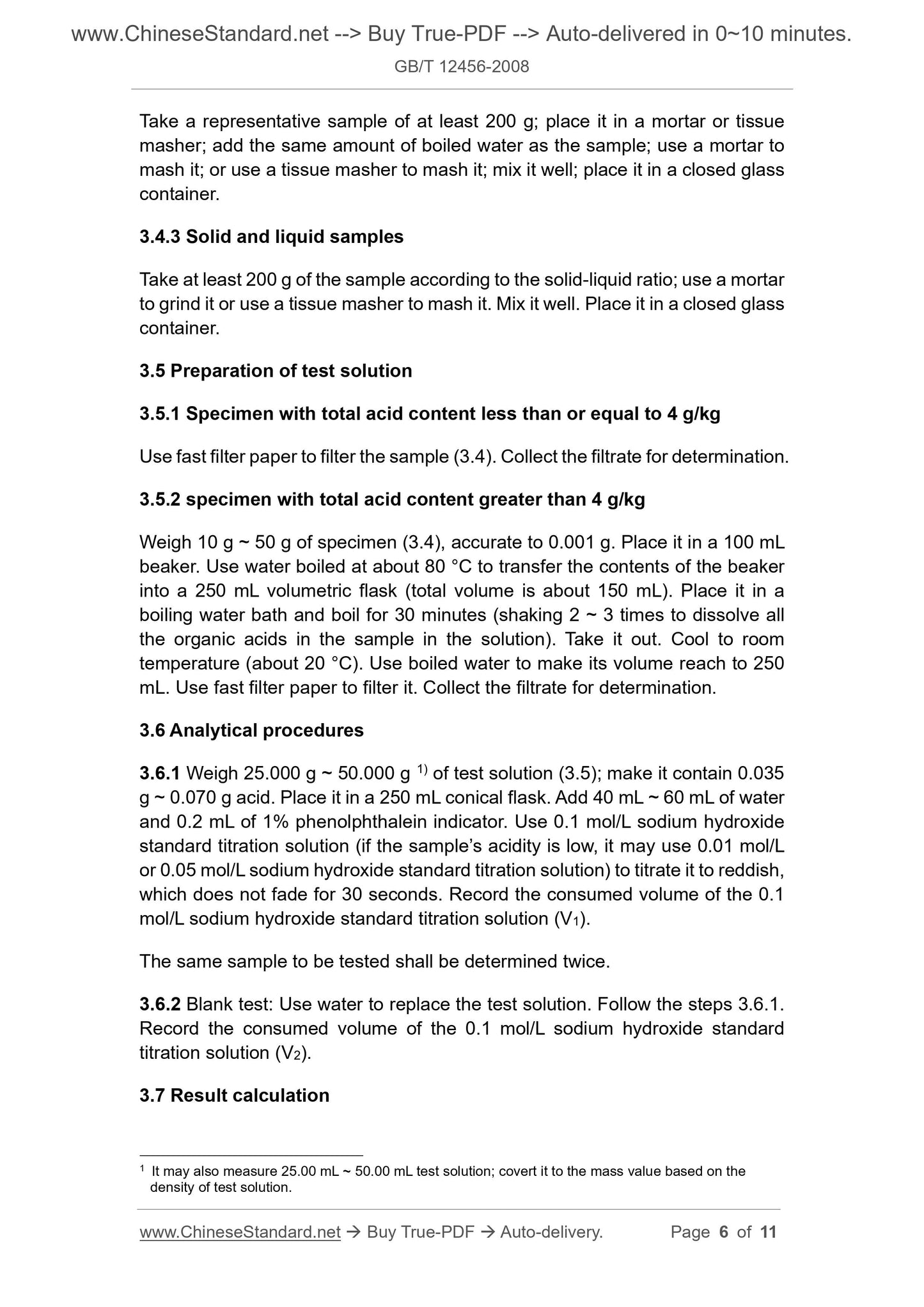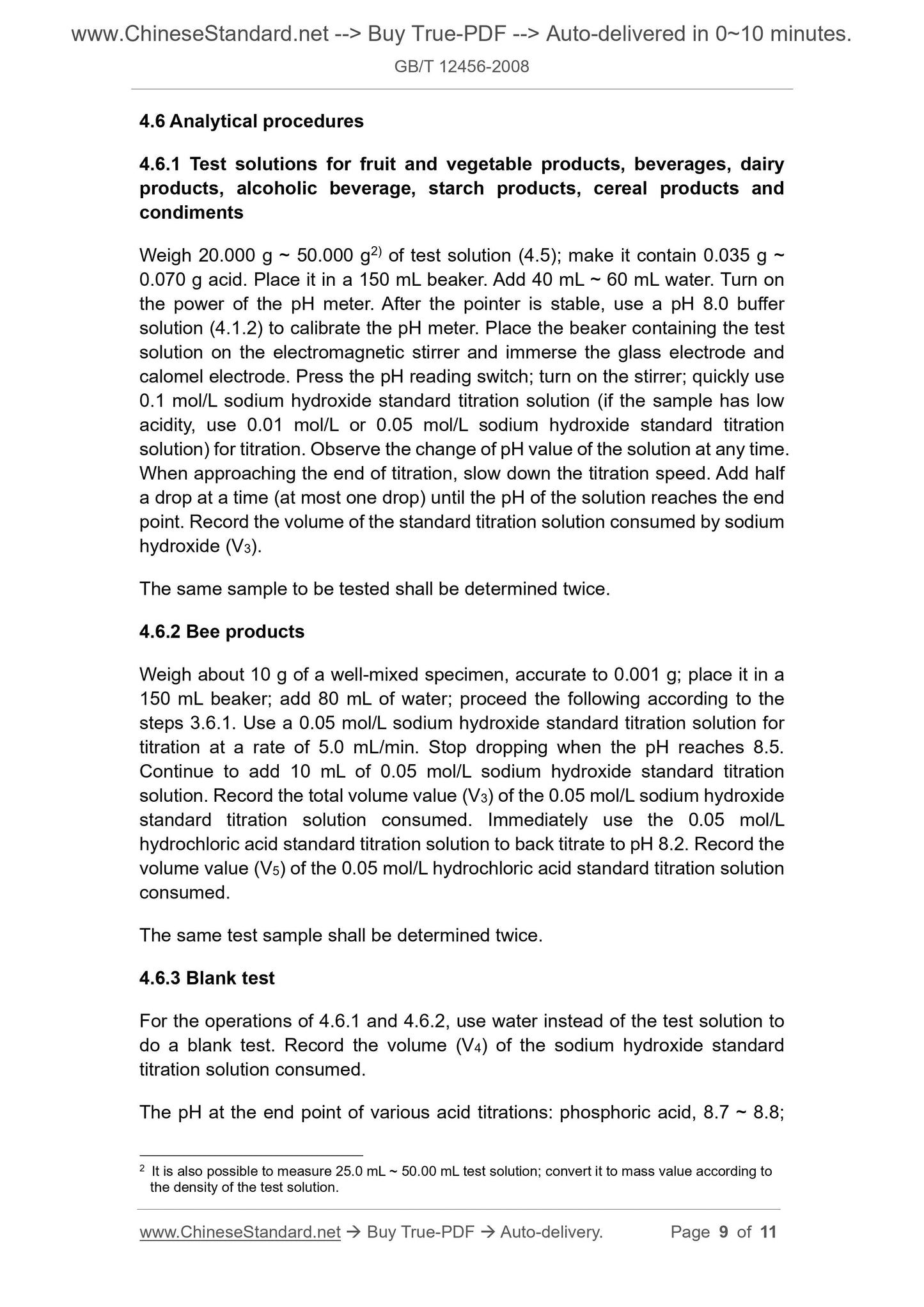1
/
of
5
PayPal, credit cards. Download editable-PDF and invoice in 1 second!
GB/T 12456-2008 English PDF (GB/T12456-2008)
GB/T 12456-2008 English PDF (GB/T12456-2008)
Regular price
$160.00
Regular price
Sale price
$160.00
Unit price
/
per
Shipping calculated at checkout.
Couldn't load pickup availability
GB/T 12456-2008: Determination of total acid in foods
Delivery: 9 seconds. Download (and Email) true-PDF + Invoice.Get Quotation: Click GB/T 12456-2008 (Self-service in 1-minute)
Newer / historical versions: GB/T 12456-2008
Preview True-PDF
Scope
This standard specifies the analytical procedures for the determination of totalacid in food by acid-base titration and pH potential method.
This standard applies to the determination of total acid in foods such as fruit
and vegetable products, beverages, dairy products, alcoholic beverage, bee
products, starch products, cereal products, condiments. The acid-base titration
method of this standard is not applicable to colored or turbid opaque test
solutions.
Basic Data
| Standard ID | GB/T 12456-2008 (GB/T12456-2008) |
| Description (Translated English) | Determination of total acid in foods |
| Sector / Industry | National Standard (Recommended) |
| Classification of Chinese Standard | X04 |
| Classification of International Standard | 67.050 |
| Word Count Estimation | 8,876 |
| Date of Issue | 2008-06-25 |
| Date of Implementation | 2009-01-01 |
| Older Standard (superseded by this standard) | GB/T 12456-1990 |
| Quoted Standard | GB/T 601; GB/T 604; GB/T 6682 |
| Adopted Standard | ISO 750-1981, NEQ |
| Regulation (derived from) | National Standard Approval Announcement 2008 No.10 (Total No.123) |
| Issuing agency(ies) | General Administration of Quality Supervision, Inspection and Quarantine of the People's Republic of China, Standardization Administration of the People's Republic of China |
| Summary | This standard specifies the determination of total acid in food analysis steps acid-base titration and pH titration method. This standard applies to fruit and vegetable products, determination of cereals and other food products and condiments total acid, beverages, dairy products, drink wine, bee, starch products. This standard does not apply to acid-base titration opaque color or turbidity test solution. |
Share
